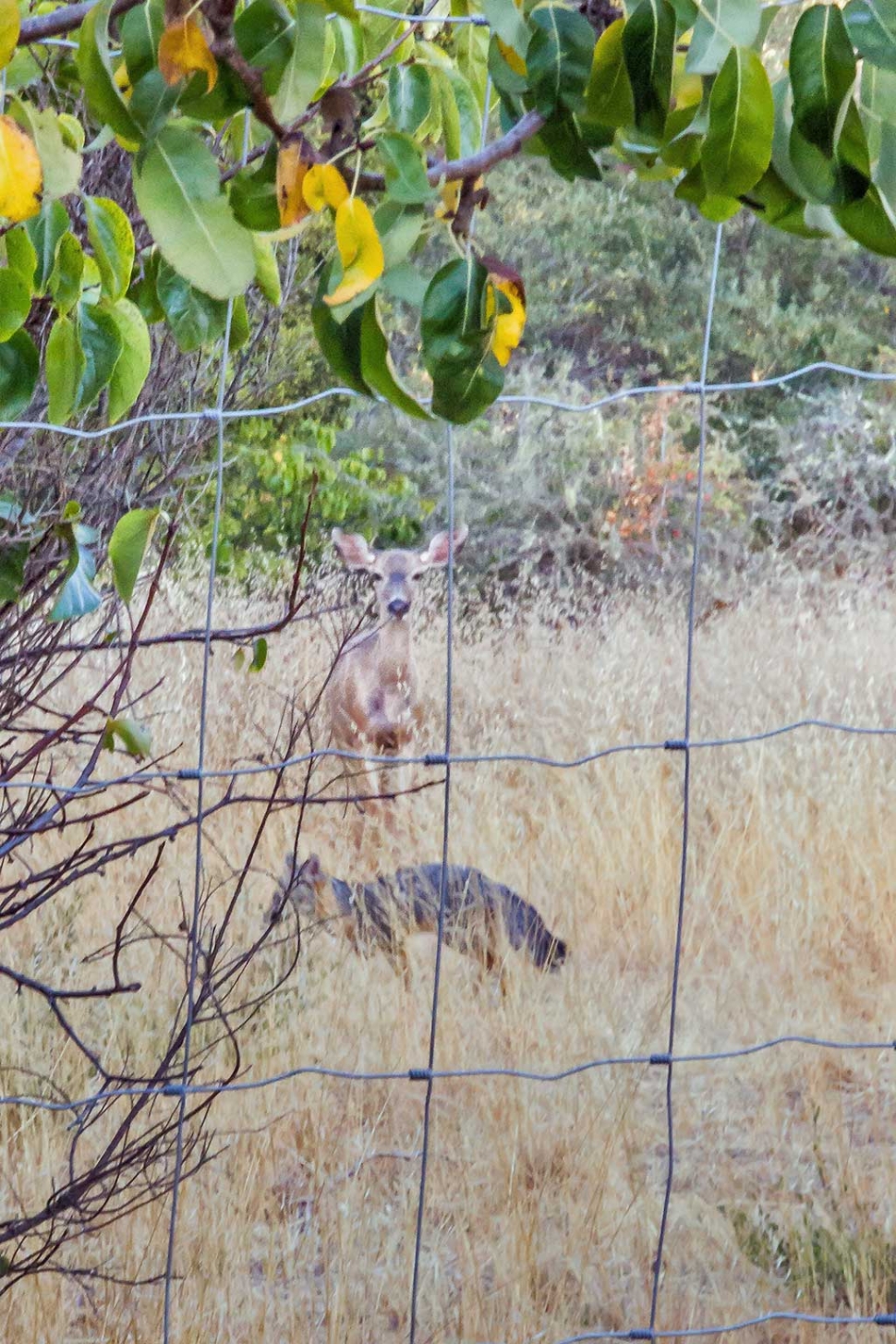|
Photography Know-How
 Photo of the week "Rare deer and fox in one composition" by Bob Crum. Photo data: ISO 3200, Canon EF-S 15-85mm lens @ 78mm, F/22, shutter speed 1/45 seconds. By Bob Crum — Wednesday, February 7th, 2018
Floating ISO
 Bob Crum I have often mentioned that I capture photos while letting the ISO float. Along comes Doug K of Oxnard asking me to explain how I do that. I can do that. Just not this second. It's a secret. Remember, ISO is one leg of the exposure triangle. In manual mode, each leg—aperture (Av), shutter speed (Tv) & ISO—are adjustable. They each affect exposure levels. Increasing ISO increases exposure—brightens the photo. Decreasing ISO darkens the photo with Av & Tv fixed. Beware: Fixed ISO often problematic. As a photojournalist shooting events, time to make camera adjustments is nonexistent. Depending on creative decisions, I'll preprogram shutter speed and aperture. If DOF (Depth-of-Field) is paramount, I'll set aperture at f/11 or smaller. For depicting action, I'll create blur by slowing the shutter speed. In these cases, I'll let ISO float. Also note that I'm creating a desired image affect by camera settings! Creativity rules! Photoing outdoor events is exasperating. Perhaps one second I'm facing the sun potentially overexposing the photos. Turn around and shadows drive the image dark. A fixed ISO at any value will most assuredly be wrong. No time to adjust ISO for every photo op. Belly dancing with mermaids likely easier! Because I can't adjust ISO fast enough to assure correct exposure, I simply inhale some “He” (helium) and float it. I mean I put ISO on “automatic”. With ISO on 'auto', the camera's exposure meter will adjust (float) to whatever value it needs to be for correct exposure. Alas... my secret exposed. However, floating ISO is not without consequences. If the camera's exposure meter takes the ISO value too high because of a fixed aperture and shutter speed, the result is excessive noise. Digital image noise looks like yesteryear's film grain. Analogous to static when turning the hi-fi audio to the maximum level. Digital noise can be 'treated' in post processing but there are limitations. Even with the best program algorithm, sharpness is sacrificed when aggressively attempting to reduce visible noise. When shooting in low light, I float the ISO so much my digital world is full of noise requiring post processing compromises. The ISO of the wave splashing, previous photo of the week, was extremely high. See any noise in the image? Mission accomplished! Setting aperture and shutter speed in manual mode not always best. Circumstances often dictate a better method. Flexibility rules. Many times semi-manual is best. If depth-of-field is more important, I'll set the aperture at f/11 (Av mode) and float shutter speed. If it's more important to have rock-solid photos I'll increase the shutter speed and float aperture. For event shooting, I usually float ISO when I fix both shutter speed and aperture. Got it Doug? Don't forget the helium. The photo of the week is a rare (for me) image of a deer & fox in the same composition. I was previously shooting landscapes with my Canon EF-S 15-85mm lens telephoto lens. Driving, I saw the fox cross the road ahead. Braked at the crossing. Quietly exited the truck camera in hand. No time to change the lens because wildlife waits for no photographer. As I raised the camera and quickly focused on the fox, a deer bolted from out of the woods. Surprise! As the fox crossed in front of the deer 30 yards away, I had only one fleeting chance to capture the photo. In a blink the fox was out of sight & the deer retreated to the woods. I cherish such serendipity. Happy photoing! Send comments, questions or suggestions to bob@fillmoregazette.com |
